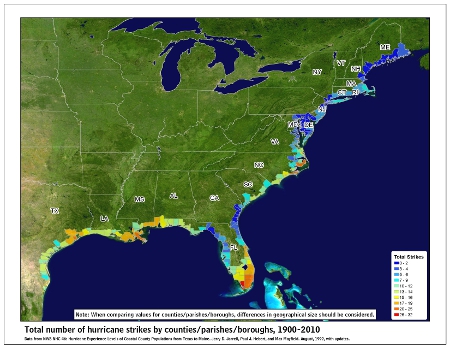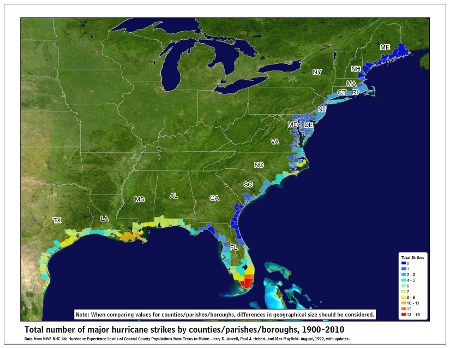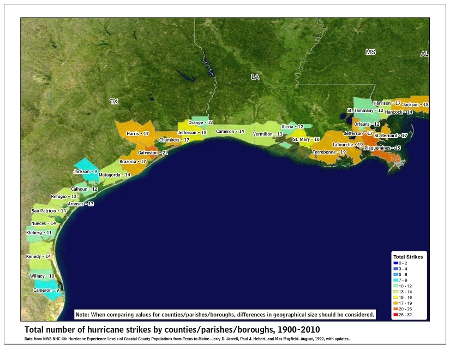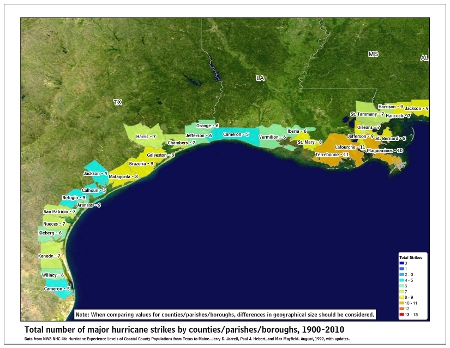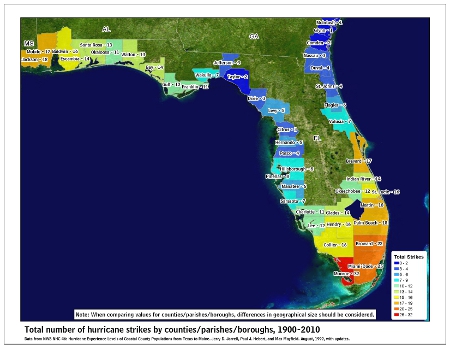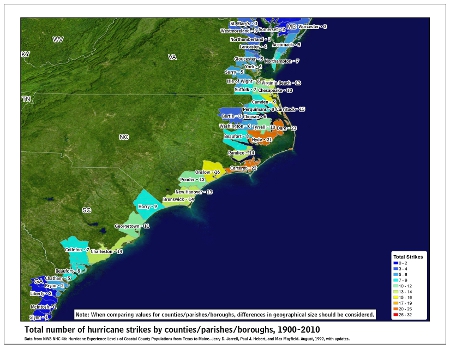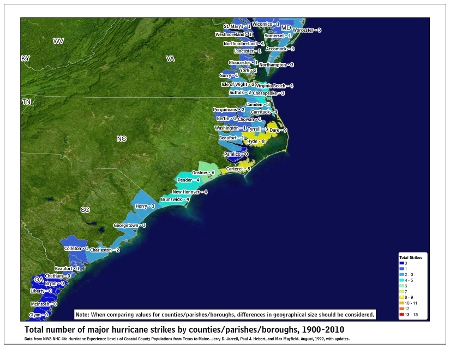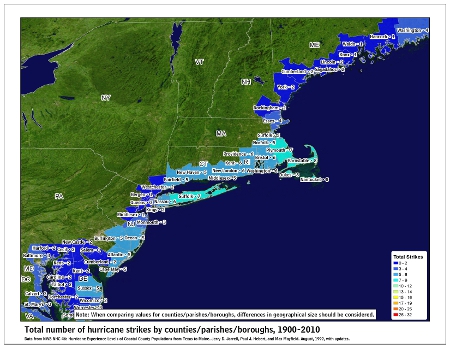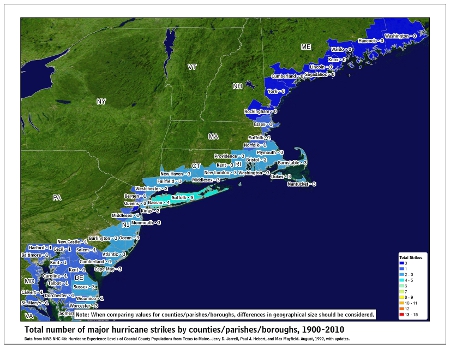 Bertha making landfall on the east coast of South Carolina while at peak intensity on May 27 | |
| Meteorological history | |
|---|---|
| Formed | May 27, 2020 (May 27, 2020) |
| Extratropical | May 28, 2020 |
| Dissipated | May 28, 2020 (May 28, 2020) |
| Tropical storm | |
| 1-minute sustained (SSHWS/NWS) | |
| Highest winds | 50 mph (85 km/h) |
| Lowest pressure | 1005 mbar (hPa); 29.68 inHg |
| Overall effects | |
| Fatalities | 1 total |
| Damage | $130,000 (2020 USD) |
| Areas affected | Eastern United States (especially Florida and South Carolina) |
Part of the 2020 Atlantic hurricane season | |
Tropical Storm Bertha was a rapidly forming and short-lived off-season tropical storm that affected the Eastern United States in late May 2020. The second named storm of the very active 2020 Atlantic hurricane season, Bertha originated from a trough in the Gulf of Mexico. The National Hurricane Center (NHC) only anticipated slight development as the trough moved over southern Florida, bringing torrential rainfall. The system rapidly organized on May 27 after it emerged into the western Atlantic Ocean, developing a small, well-defined circulation. That day, the disturbance developed into Tropical Storm Bertha east of Georgia, and a few hours later it moved ashore near Isle of Palms, South Carolina with peak winds of 50 mph (80 km/h). The storm weakened over land and dissipated late on May 28 over West Virginia.
The storm and its precursor disturbance caused heavy rainfall and flash flooding in southern Florida, as well as spawning a brief tornado. In South Carolina, Bertha produced above normal tides and locally heavy rainfall, causing minor flooding. As the storm moved into North Carolina, its remnants produced a brief tornado, while rip currents resulted in several water rescues in Surf City. According to the National Centers for Environmental Information, Bertha caused $130,000 (2020 USD) in damage.
Meteorological history
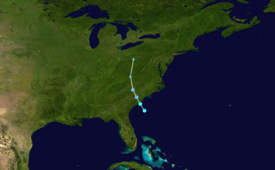
Tropical storm (39–73 mph, 63–118 km/h)
Category 1 (74–95 mph, 119–153 km/h)
Category 2 (96–110 mph, 154–177 km/h)
Category 3 (111–129 mph, 178–208 km/h)
Category 4 (130–156 mph, 209–251 km/h)
Category 5 (≥157 mph, ≥252 km/h)
Unknown
A trough, or elongated low pressure area, developed in the southeastern Gulf of Mexico on May 24.[1] By that time, the trough extended across southern Florida into the western Atlantic Ocean, producing a widespread area of thunderstorms. The National Hurricane Center (NHC) first mentioned the system in a special tropical weather outlook on May 25, assessing a 20% chance for tropical cyclogenesis, due to expected strong wind shear, the proximity to land, and dry air.[2] By that time, the trough extended across southern Florida into the western Atlantic Ocean, producing a widespread area of thunderstorms.[3] A weak surface low formed near Orlando, Florida early on May 26, which moved northeast over water by early the following day. Subsequently, the NHC increased the system's development potential to 30%.[4]
Early on May 27, the system developed a well-defined center underneath an area of organized thunderstorms. In addition, an offshore buoy recorded tropical storm-force winds.[5] The NHC estimated that the system developed into Tropical Storm Bertha at 06:00 UTC that day while located about 140 mi (230 km) east of Savannah, Georgia.[1] Operationally, it was not until 12:30 UTC that the NHC had initiated advisories on Bertha.[6] The storm had characteristics of both a tropical and a subtropical cyclone, but the NHC designated it as tropical due to the storm's small radius of maximum winds.[1] Upon its formation, Bertha was moving northwestward around the western side of a ridge over the western Atlantic.[6] At 12:00 UTC, the storm had reached peak winds of 50 mph (80 km/h); this was based on observations from buoys and the storm's well-defined curved rainbands near the center.[1] Its gale-force winds extended only 25 mi (40 km) from the center.[7] At 13:00 UTC on May 27, 2020, Bertha made landfall near Isle of Palms, South Carolina while at peak intensity. The storm quickly weakened as it progressed inland, falling to tropical depression status within a few hours of moving ashore. The depression turned toward the north, moving through western North Carolina and into western Virginia. Early on May 28, Bertha transitioned into an extratropical cyclone, which persisted another 12 hours before dissipating over northern West Virginia.[1]
Preparations and impact

Florida
The precursor disturbance to Tropical Storm Bertha caused a significant, multi-day rainfall event across South Florida, reaching 8–10 in (200–250 mm) across several locations. The peak 72–hour accumulation was 14.19 in (360 mm), recorded in Miami.[8][9] Rainfall rates of 4 in (100 mm) an hour contributed to a 24-hour total of 7.4 in (190 mm) there, more than doubling the previous daily rainfall record and resulting in the city's most significant rain event in eight years.[10] The precursor disturbance spawned an EF1 tornado in Aladdin City, which produced winds of 90 mph (140 km/h) and was on the ground for 4.83 mi (7.77 km). The tornado damaged trees and fences, and overturned several campers. There was also a funnel cloud in Broward County.[11] However, they were not considered to be directly associated with Bertha. Thunderstorms produced hail up to 1 in (25 mm) in diameter near Wellington, as well as wind gusts estimated up to 65 mph (105 km/h).[12][9]
In and around Miami, the rains flooded homes and roadways, especially in close proximity to canals.[13] Some homes even reported partial roof collapses throughout Hallandale Beach and Hollywood as a result of the heavy precipitation.[14] Local police in El Portal asked that the South Florida Water Management District open floodgates to relieve flooding in those canals.[15] Floodwaters entered vehicles and buildings in Miami Beach and Hialeah, prompting several water rescues. Hialeah's mayor asked residents to remain indoors accordingly.[16][13] Days of heavy rainfall prompted local National Weather Service offices to issue flash flood warnings, and sporadic severe thunderstorms prompted additional advisories.[17] Strong wind gusts uprooted a tree onto Route A1A.[9] As the low associated with Bertha moved northeastward, it also produced minor flooding near St. Augustine due to heavy rainfall.[18] Unsettled weather related to Bertha forced the cancellation of the planned Crew Dragon Demo-2 launch on May 27 from Cape Canaveral.[19] Damage across the state was estimated at $71,000.[20]
Carolinas

Ahead of Bertha's development, the NHC warned of the potential that the system could cause flash flooding, dangerous marine conditions, life-threatening surf and rip currents.[4] Upon Bertha's development, the NHC issued a tropical storm warning for the South Carolina coastline from Edisto Beach to South Santee River, only an hour before landfall.[21] The National Hurricane Center warned that given very saturated antecedent conditions, rainfall from Bertha could produce life-threatening flash flooding and river flooding.[22] The 2020 Alsco Uniforms 500, held in Charlotte, North Carolina, was also postponed a day due to the possibility of bad weather.[23]
Upon moving ashore, Bertha produced a small storm surge, causing some coastal flooding. Wrightsville Beach, North Carolina recorded water levels 1.32 ft (0.40 m) above normal, the highest tides related to the storm. Bertha also dropped rainfall across South Carolina, reaching 5 in (130 mm) in some locations. Wind gusts on land reached 53 mph (85 km/h) in Winyah Bay.[1]
Floods in Charleston, South Carolina inundated streets and cars.[24][25] A few streams exceeded their banks in Lancaster County, flooding some bridges.[26] Minor power outages occurred throughout South Carolina.[27] A drowning was reported in Myrtle Beach due to rip currents from Bertha after the storm made landfall.[28] Heavy rainfall in North Carolina flooded roads and streams near Charlotte.[29] The storm's remnants spawned a brief EF0 tornado in northern Warren County, which destroyed a building and uprooted a few trees. Damage caused by tornado was estimated at $50,000, although it was not considered to be directly associated with Bertha.[30] At least ten people required rescue in Surf City from rip currents.[31]
Elsewhere
The remnants of Bertha later brought rainfall to West Virginia, resulting in flash flooding in Kanawha County that inundated some roads. Statewide damage was estimated at $16,000.[32] Rainfall from Bertha extended into northeastern Ohio, where it was the earliest former tropical cyclone to affect the state on record.[33] Pittsburgh, Pennsylvania recorded 0.61 in (15 mm) of rainfall related to the storm.[34]
See also
- Timeline of the 2020 Atlantic hurricane season
- Tropical cyclones in 2020
- Other storms with the same name
- Tropical Storm Ana (2015) – off-season storm that struck South Carolina
- Tropical Storm Bonnie (2016) – off-season storm that struck South Carolina
- Tropical Storm Arthur (2020) – off-season storm that same month, also dumped heavy rainfall in Florida
- Tropical Storm Danny (2021) – rapidly forming, short lived storm that took a similar track
- Tropical Storm Colin (2022) - another rapidly forming, short lived storm that impacted the Carolinas
- Tropical Storm Ophelia (2023) - yet another rapidly forming storm that made landfall in the Carolinas
References
- ^ a b c d e f John Cangialosi (September 23, 2020). "Tropical Storm Bertha Tropical Cyclone Report" (PDF). National Hurricane Center. Retrieved October 25, 2020.
- ^ Robbie Berg (May 25, 2020). "Special Tropical Weather Outlook". TXT. Retrieved October 25, 2020.
- ^ Stacy Stewart (May 26, 2020). "Special Tropical Weather Report". TXT. Retrieved October 25, 2020.
- ^ a b John P. Cangialosi (May 27, 2020). "Special Tropical Weather Outlook" (TXT). Retrieved October 25, 2020.
- ^ Andrew Latto (May 27, 2020). "Special Tropical Weather Outlook" (TXT). Retrieved October 25, 2020.
- ^ a b Micheal Brennan; Daniel Brown (May 27, 2020). "Tropical Storm Bertha Special Discussion Number 1". National Hurricane Center. Retrieved October 25, 2020.
{{cite web}}: CS1 maint: multiple names: authors list (link) - ^ Micheal Brennan (May 27, 2020). "Tropical Storm Bertha Special Advisory Number 1". National Hurricane Center. Archived from the original on September 16, 2020. Retrieved October 25, 2020.
- ^ "72-Hour Precipitation Reports (Updated by County)". Iowa Environmental Mesonet. National Weather Service Weather Forecast Office in Miami, Florida. May 27, 2020. Archived from the original on August 9, 2020. Retrieved May 27, 2020.
- ^ a b c "Event: Thunderstorm Wind in Palm Beach County, Florida". National Climatic Data Center. 2020. Retrieved October 28, 2020.
- ^ Lois Solomon; Victoria Ballard; Rafael Olmeda; Wayne Roustan (May 27, 2020). "Bertha Downgraded to Tropical Depression; Relentless Rain to Continue in Saturated South Florida". Sun-Sentinel. Archived from the original on August 9, 2020. Retrieved May 27, 2020.
- ^ "Event: Tornado in Palm Beach County, Florida". National Climatic Data Center. 2020. Retrieved October 28, 2020.
- ^ "Event: Hail in Palm Beach County, Florida". National Climatic Data Center. 2020. Retrieved October 28, 2020.
- ^ a b Christian De La Rosa; Liane Morejon (May 26, 2020). "Steady Downpours Bring Costly Flooding Across South Florida". WPLG. Archived from the original on June 4, 2020. Retrieved May 27, 2020.
- ^ Liane Morejon; Janine Stanwood; Christian De La Rosa; Saira Anwer; Amanda Batchelor (May 25, 2020). "Flash Flood Warning in Effect: South Floridians Deal with Rainfall, Tornado, Dangerous Roads". WPLG. Archived from the original on June 3, 2020. Retrieved May 27, 2020.
- ^ Brent Cameron; Sheldon Fox; Katrina Bush (May 26, 2020). "Flooded Streets in Broward, Miami-Dade Cause Multiple Cars to Stall as Storms Batter South Florida". WSVN. Archived from the original on June 19, 2020. Retrieved May 27, 2020.
- ^ "Event: Flash Flood in Miami-Dade County, Florida". National Climatic Data Center. 2020. Retrieved October 28, 2020.
- ^ "NWS Damage Survey for 05/25/2020 Redlands Tornado Event Update 1". Iowa Environmental Mesonet. National Weather Service Weather Forecast Office in Miami, Florida. May 26, 2020. Archived from the original on June 30, 2020. Retrieved May 27, 2020.
- ^ "Event: Flood in St. Johns County, Florida". National Climatic Data Center. 2020. Retrieved October 28, 2020.
- ^ Jacob Bogage; Christian Davenport (May 27, 2020). "SpaceX's Falcon 9 Rocket Launch is Scrubbed Due to Weather". The Washington Post. Archived from the original on September 19, 2020. Retrieved May 27, 2020.
- ^ "Florida Event Reports for May 25–26, 2020". National Centers for Environmental Information. 2020. Archived from the original on September 13, 2020. Retrieved August 22, 2020.
- ^ Micheal Brennan (May 27, 2020). "Tropical Storm Bertha Advisory 1". www.nhc.noaa.gov. Archived from the original on September 16, 2020. Retrieved May 28, 2020.
- ^ Judson Jones and Theresa Waldrop (May 27, 2020). "Bertha Weakens to a Tropical Depression, Bringing Heavy Rain to South Carolina". CNN.com. Archived from the original on May 31, 2020. Retrieved June 1, 2020.
- ^ Reid Spencer (May 28, 2020). "Elliot Captures First Cup Series Win of the Season at Charlotte". MRN. Retrieved November 11, 2020.
- ^ Levenson, Michael (2020-05-27). "Tropical Storm Bertha Could Cause Dangerous Flooding in the South". The New York Times. ISSN 0362-4331. Archived from the original on 2020-05-31. Retrieved 2020-06-01.
- ^ Rice, Doyle (May 27, 2020). "Tropical Storm Bertha Makes Landfall on South Carolina Coast, Could Bring up to 8 Inches of Rain to Some Areas". USA Today. Retrieved October 25, 2020.
- ^ "Event: Flood in Lancaster County, South Carolina". National Climatic Data Center. 2020. Retrieved November 5, 2020.
- ^ Collins, Jeffery (May 27, 2020). "Bertha Forms, Hits South Carolina Coast, Dissipates in a Day". ABC News. Archived from the original on May 29, 2020. Retrieved May 29, 2020.
- ^ Summer Dashe (May 27, 2020). "Drowning Reported in Myrtle Beach Wednesday After Tropical Storm Bertha Hit Coast". Archived from the original on 2020-06-06. Retrieved 2020-05-30.
- ^ "Event: Flash Flood in Mecklenberg County, North Carolina". National Climatic Data Center. 2020. Retrieved November 5, 2020.
- ^ "Event: Tornado in Warren County, North Carolina". National Climatic Data Center. 2020. Retrieved November 5, 2020.
- ^ Hannah Patrick (May 29, 2020). "Surf City Fire Chief Says Tropical Storms Causing Increase in Rip Current Rescues". WWAYTV3. Retrieved November 5, 2020.
- ^ "Event: Flash Flood in Kanawha County, West Virginia". National Climatic Data Center. 2020. Retrieved November 5, 2020.
- ^ Talia Naquin. "Remnants of Tropical Storm Bertha Impact Northeast Ohio". FOX 8. Retrieved November 18, 2020.
- ^ Remnants of Hurricanes and Tropical Storms That Have Brought Rainfall to the Region (PDF) (Report). Pittsburgh, PA National Weather Service. Retrieved November 18, 2020.
External links
| Pre-1850 | |
|---|---|
| 1850–99 | |
| 1900–49 | |
| 1950–74 | |
| 1975–99 | |
| 2000s | |
| 2010s | |
| 2020s | |
Tropical cyclones of the 2020 Atlantic hurricane season | ||
|---|---|---|

 DONATE
DONATE![[Map of 1950-2017 CONUS Hurricane Strikes]](http://www.nhc.noaa.gov/climo/images/conus_strikes_sm.jpg)
